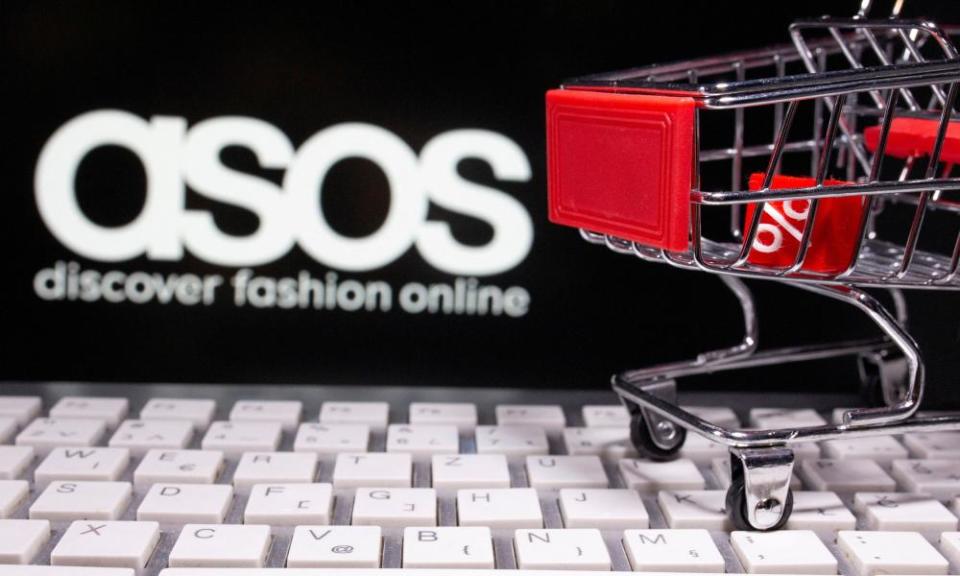Asos expects £14m hit from halting trade in Russia after invasion of Ukraine

Fashion retailer swings from £106m profit to £16m loss in six months to February, while share prices rise
The online fashion retailer Asos expects to take a £14m hit to its profits and a 2% reduction in growth, following its decision to stop trading in Russia in response to Moscow’s invasion of Ukraine.
The forecast came as the company swung to a £15.8m pre-tax loss in the six months to the end of the February, compared with a £106.4m profit a year earlier, when it was among the internet retailers benefiting from the lockdown e-commerce boom as shoppers stocked up on leisurewear while stuck at home.
Sales in the UK grew by 8% to £895.5m over the period, and by 11% in the US. However, Asos said supply chain disruption had led to reduced availability of some products and had prevented it from selling some of its newest lines.
The online retailer’s share price was up more than 5% at lunchtime on Tuesday following its half-year results announcement, at about £16.20. A year ago its shares were trading at more than £50.
Asos said sales had been boosted by the addition of Topshop brands to its website, particularly in the UK, US and Germany. The retailer acquired Topshop, as well as the brands Topman, Miss Selfridge and the activewear range HIIT, in early 2021, following the collapse of Sir Philip Green’s retail empire during the first year of the pandemic.
However, it issued a note of caution in its outlook for the rest of the year, as shoppers are expected to cut back on spending amid rising inflation and the cost of living crisis.
Asos said it had not yet seen an impact on consumers’ behaviour or their spending, but predicted this might change in the coming months as shoppers face higher energy bills and tax increases.
Asos, which has not had a full-time chief executive since Nick Beighton quit last October, said it had bought more spring and summer clothing in advance, to try to offset longer shipping times, which had resulted in some products arriving a month later than expected.
Mat Dunn, Asos’s chief operating officer and finance chief, who is leading the company while it searches for a new boss, said the company had reported increased costs throughout its supply chain.
“We have seen it in warehouse wages and the other area we have seen it reflected is in freight costs. They represent the vast majority of our inflationary pressures. We have chosen to absorb a significant amount of that in the short term,” Dunn said.
“We believe that ultimately some of those freight costs will unwind and so we have chosen to absorb them rather than pass them on to consumers.”
However, he said the company had increased the price of some products by “low to mid-single digits” at the start of 2022.
Asos’s results highlighted how the explosion in online shopping during lockdowns has come “crashing back to reality”, according to Matt Britzman, equity analyst at broker Hargreaves Lansdown.
“The goldilocks conditions seen last year are well and truly over. That’s a pretty sombre backdrop and means the outlook from here is a tricky one to be confident about,” he said.
Despite Asos’s swing to the red following the easing of Covid restrictions and reopening of shops, Dunn said he believed retail was going through “a period of realignment”, but that online shopping continued to account for a higher proportion of consumer spending than before the pandemic.

 Yahoo Finance
Yahoo Finance 